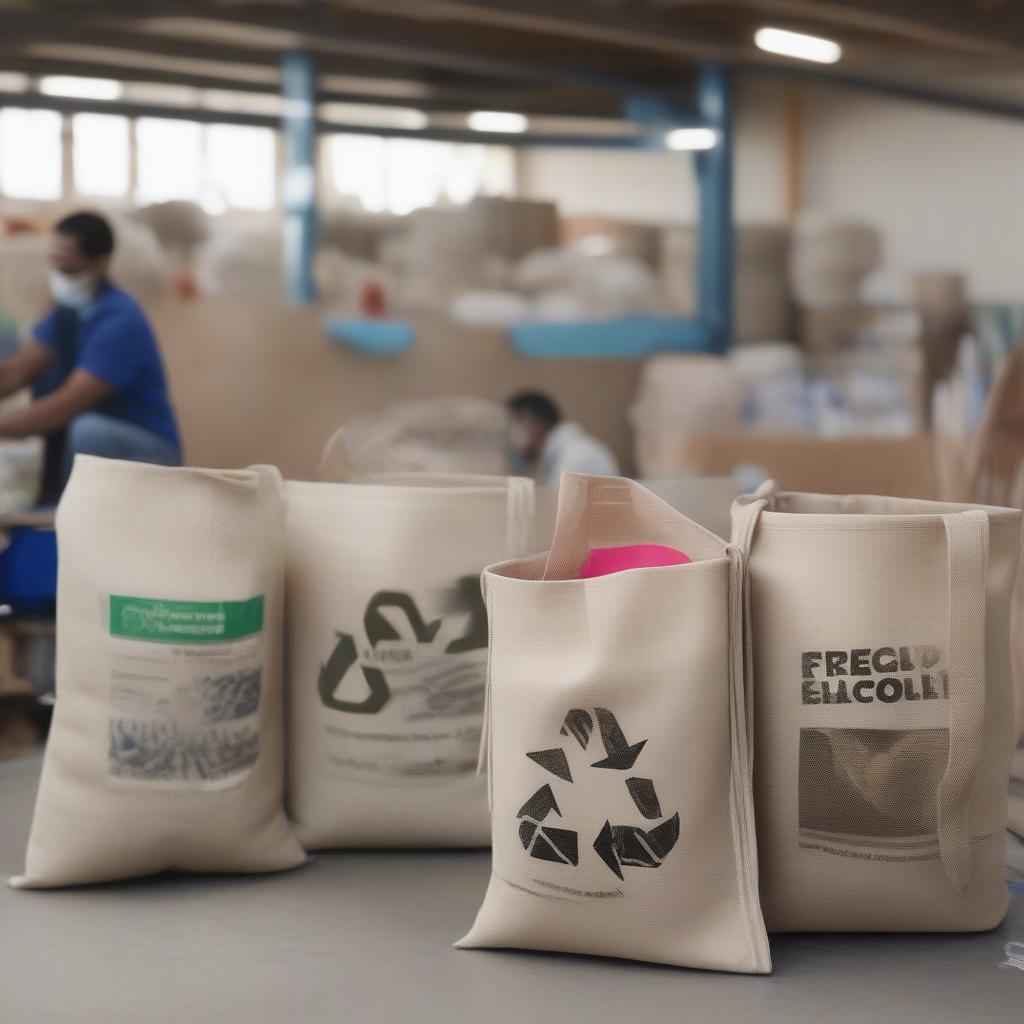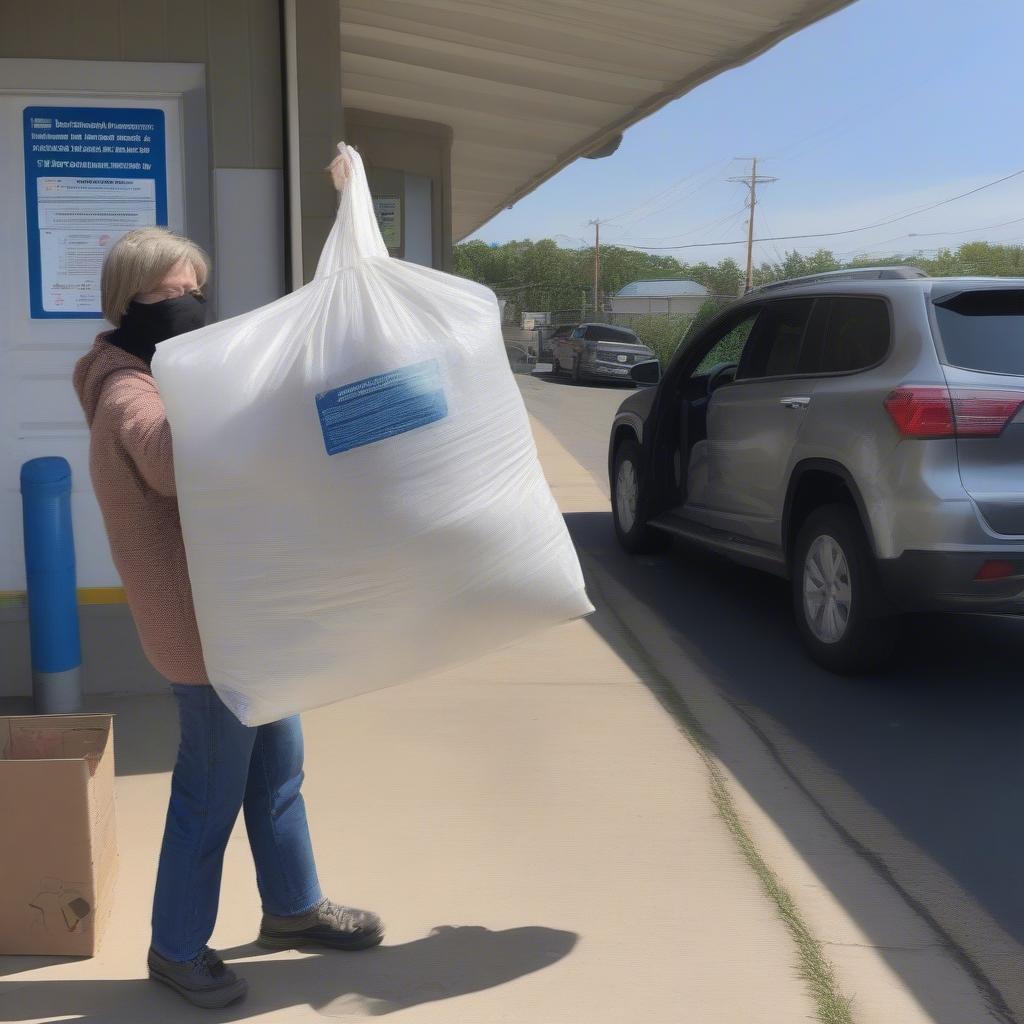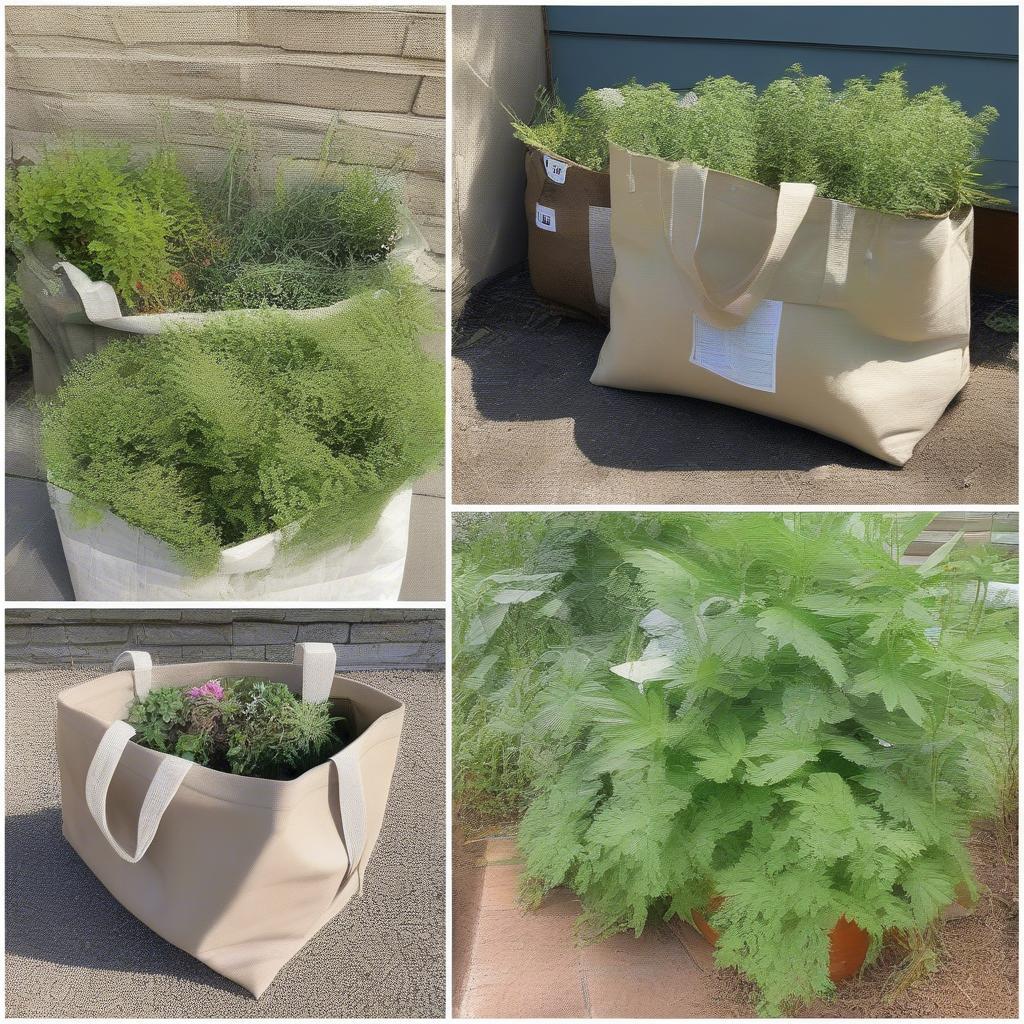Woven Bag
Can Woven Feed Bags Be Recycled?
Can Woven Feed Bags Be Recycled? It’s a question many environmentally conscious animal owners and farmers are asking. These sturdy bags, often made from woven polypropylene, are incredibly useful for transporting and storing animal feed. But what happens when they’re empty? Let’s explore the recyclability of these common agricultural staples.
 Woven feed bags recycling options: drop-off locations, repurposing ideas, and how to identify recyclable materials.
Woven feed bags recycling options: drop-off locations, repurposing ideas, and how to identify recyclable materials.
Understanding Woven Feed Bag Materials
Most woven feed bags are made from plastic polypropylene woven bag, a thermoplastic polymer known for its durability and resistance to tearing. This makes them perfect for heavy loads of feed. Polypropylene is identified by the resin identification code #5. This is important because it indicates the bag’s potential for recycling. Not all recycling facilities accept #5 plastics, but many do. Check with your local recycling program for specific guidelines. Some bags might also be constructed from hdpe circular woven bags, a high-density polyethylene. This material is also recyclable, typically carrying the resin identification code #2.
Can Woven Feed Bags Be Recycled Curbside?
Unfortunately, most curbside recycling programs don’t accept woven feed bags. This is primarily due to their size and the potential for them to tangle in the recycling machinery. However, this doesn’t mean they can’t be recycled at all.
 Dropping off woven feed bags at specific recycling centers.
Dropping off woven feed bags at specific recycling centers.
Finding Recycling Options for Woven Feed Bags
Several options exist for recycling woven feed bags beyond curbside pickup. Some agricultural supply stores or feed mills offer take-back programs for used bags. These programs often collect the bags and send them to specialized recycling facilities. Additionally, some plastic film recycling drop-off locations accept woven feed bags. These locations often handle other flexible plastics like grocery bags and plastic wrap. Check online resources like Earth911 to find a drop-off location near you. If you use pp woven bags 1ton, these larger bags might require special handling, so contacting recycling facilities directly is advised.
Repurposing Woven Feed Bags: A Creative Alternative
If recycling isn’t readily available in your area, repurposing is a fantastic way to give these durable bags a second life. Their strength and woven construction make them ideal for various projects. You can use them to create sturdy tote bags, garden weed barriers, or even protective covers for plants during winter.
“Repurposing not only reduces waste but also allows for creative expression,” says Sarah Miller, a sustainable living expert and founder of GreenCraft Collective. “Woven feed bags, with their robust material, are surprisingly versatile and can be transformed into a variety of useful items.”
 Examples of repurposed woven feed bags, such as tote bags, garden weed barriers, and plant covers.
Examples of repurposed woven feed bags, such as tote bags, garden weed barriers, and plant covers.
What About Woven Polypropylene Bags Misprints?
Even misprinted woven polypropylene bags can often be recycled or repurposed. The misprint doesn’t usually affect the material’s recyclability. The same principles apply: check for local recycling programs or get creative with repurposing ideas.
Reducing Feed Bag Waste: A Sustainable Approach
Beyond recycling and repurposing, minimizing feed bag waste from the outset is crucial. Buying feed in bulk, using reusable containers, or opting for roll plastic pp woven bag can significantly reduce the number of bags you consume.
“By embracing a more conscious approach to consumption and waste management, we can collectively minimize our environmental footprint,” adds John Davies, an agricultural consultant specializing in sustainable farming practices. “Reducing reliance on single-use packaging, like feed bags, is a step in the right direction.”
Conclusion: Closing the Loop on Woven Feed Bag Waste
So, can woven feed bags be recycled? While curbside recycling is often not an option, dedicated recycling programs and creative repurposing solutions exist. By understanding the materials involved and exploring available options, we can minimize the environmental impact of these ubiquitous agricultural necessities and contribute to a more sustainable future. Remember to always check your local regulations and recycling facilities for specific guidelines.
FAQ
- What is the most common material for woven feed bags? Polypropylene (#5 plastic)
- Can I put woven feed bags in my curbside recycling bin? Generally, no. Check with your local recycling program.
- Where can I find recycling drop-off locations for woven feed bags? Search online resources like Earth911 or contact local agricultural stores.
- What are some ways to repurpose woven feed bags? Tote bags, weed barriers, plant covers, and more.
- How can I reduce my feed bag waste? Buy feed in bulk or explore reusable container options.
- Are misprinted feed bags recyclable? Yes, typically the misprint doesn’t impact recyclability.
- What is the resin identification code for HDPE woven bags? #2
For further information, check out our articles on plastic polypropylene woven bags and HDPE circular woven bags. Need help with woven feed bag recycling or repurposing? Contact us at Hanoi, Vietnam or Tech Avenue, Suite 12, San Francisco, CA 94105, USA. We have a 24/7 customer service team.
